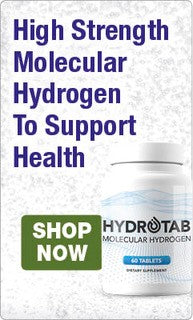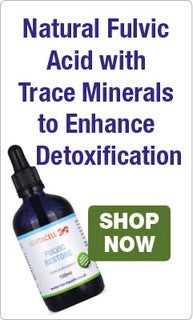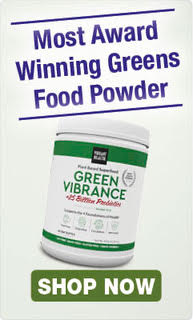Even though they are backed by research, antioxidants are one of those questionable things that everyone secretly suspects may be overrated.
These naturally-occurring compounds are found in many plant-based foods. Health experts claim they reduce free radicals, eliminate toxins and prevent disease, but are they really capable of such feats or is it yet another gimmicky sales pitch?
Here’s what you need to know about antioxidants and whether or not they're worth your time (and money).
What Are Antioxidants?
Antioxidants are compounds that occur naturally in plant foods such as fruits and vegetables. Essentially, antioxidants are electron donors. They work to fight free radicals, which are unstable compounds that invade the body and cause infection, disease and other threats.
Free radicals accumulate in the body during exposure to pollutants, stress, poor diet and lack of exercise. Once they enter the body, free radicals steal electrons from nearby substances that yield to them.
After these nearby substances lose their electrons, they turn into a completely different structural and functional compound. Some even change their DNA as a result of this loss of electron.
Antioxidants work by donating an electron to free radicals so that they become neutralised, meaning they are no longer dangerous.
The Benefits of Antioxidants
Foods that are high in antioxidants have seemingly limitless benefits. They are particularly useful in preventing free radical damage in the body, which includes cardiovascular disease, Alzheimer’s disease, diabetes, Parkinson’s disease, age-related macular degeneration and cataracts.
According to a six-year study called the Age-Related Eye Disease Study, supplementing with a combination of vitamins C and E, beta-carotene and zinc provided protection against advanced age-related macular degeneration in those who were at high risk of the disease.
The best thing antioxidants do for us is combat free radicals, which cause inflammation and oxidative stress, leading to disease and other health disorders.
Oxidative stress occurs when there is an imbalance between reactive oxygen species (ROS) and the parts of the body responsible for getting rid of them.
Oxidative stress has been linked to a number of diseases including ocular disease, diabetes, rheumatoid arthritis, Alzheimer’s disease, atherosclerosis and motor neurone disease.
According to a 2010 study published in Research In Pharmaceutical Studies, antioxidants may prevent or delay the onset of these conditions.
Eating foods that are high in antioxidants seems to do the most good. For example, blueberries have one of the highest antioxidant contents.
They have been shown to protect against aging and DNA damage, protect blood from becoming damaged by cholesterol, lower blood pressure, prevent heart disease, improve memory and support brain function, reverse diabetes, fight urinary tract infections and repair muscle damage after exercise.
Do Antioxidants Really Work?
The debate about whether antioxidants really prevent disease has long been disputed. More than 100,000 in total have been tested to determine whether antioxidants prevent certain diseases.
According to the National Center for Complementary and Integrative Health, decades of research concludes that consuming higher amounts of antioxidants may be able to help protect against certain diseases, especially neurodegenerative diseases, eye diseases and DNA damage.
There is no denying that eating foods high in antioxidants is the best way to address free radical damage. According to the International Dermal Institute, free radicals are responsible for promoting skin diseases, inflammation and aging within the skin.
Antioxidants additionally protect against sun damage and wrinkles while protecting vision. They have even been found to have disease-fighting properties that benefit the entire body.
Because of their ability to combat inflammation and toxins in the body, antioxidants may be useful in helping you lose weight, quicken metabolism, absorb nutrients better and slow the progression of disease and aging.
Foods High in Antioxidants
Because people need a spread of antioxidants, it is best to eat a wide variety of fruits and vegetables that contain many different sources. Examples include:
- Wild blueberries
- Goji berries
- Cranberries
- Blackberries
- Kidney beans
- Elderberries
- Cilantro
- Artichoke
- Pecans
- Dark chocolate (dairy-free and free of sugar!)
In addition to getting your antioxidants from food sources, consider adding molecular hydrogen to the mix. Molecular hydrogen (H2) combines two hydrogen atoms that create the smallest molecule in existence.
Its small size is incredibly beneficial for cell health, as it is able to penetrate deep into cells to ward off disease and DNA damage.
Molecular hydrogen is also small enough to cross the blood-brain barrier, where it can improve brain function.
While it is quite technical, this review paper on molecular hydrogen further outlines its benefits as an antioxidant.
The best way of obtaining molecular hydrogen is to drink hydrogen-rich water. Try HydroTab, a dissolvable molecular hydrogen tablet that provides 10 parts-per-million of H2.
Antioxidant Supplements
There are a number of other molecular hydrogen products out there, but one you may want to look at is the Energy Plus. It is a four-stage under-sink water filtration system which, in addition to filtering chlorine, fluoride, microplastics and various contaminants from your water, stimulates the release of active hydrogen.
We could all do with drinking healthier water, and the Energy Plus helps us do just that, yielding water that is clean, free of contaminants, alkaline and antioxidant-rich.
If you’re after an antioxidant-rich food supplement, meanwhile, try Spectrum Vibrance (formerly Rainbow Vibrance). A single serving provides 3,974 ORAC units (Oxygen Radical Absorbance Capacity). To put it in context, that’s equal to the quantity of free radical fighters we’d gain from eating 4.5 servings of fruit and vegetables!
Vibrant Health’s formula contains a broad range of antioxidant-rich fruit and vegetables – 36 to be exact – and can be mixed with water or a smoothie and drunk once per day. As you might expect, it provides a good amount of vitamin C (58% of your RDA in one serving) and just 25 calories.




























Leave a comment